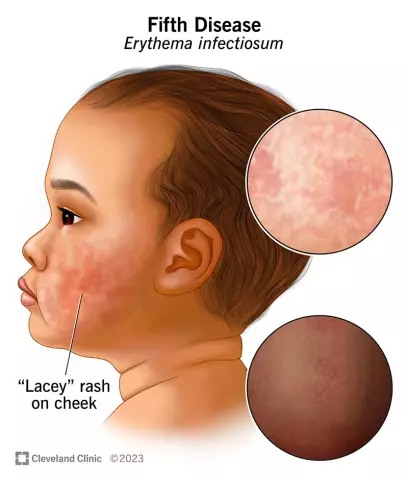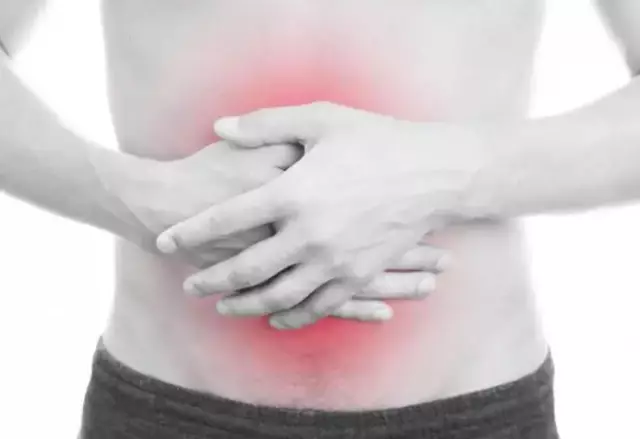- Author Rachel Wainwright [email protected].
- Public 2023-12-15 07:39.
- Last modified 2025-11-02 20:14.
Erythema migrans

Erythema migrans is a chronic inflammatory dermatosis-like disease caused by a viral or bacterial infection.
Causes and symptoms of erythema migrans
In most cases, the cause of erythema migrans cannot be established, but in some cases the disease is caused by ixodid ticks or other insects.
After an insect bite, within a few days, the first symptoms of erythema migrans appear - redness of the skin, swelling and slight peeling.
This disease has a protracted and complex course, often becomes chronic and can be transmitted from mother to child.
The focus of chronic erythema migrans can have a ring-shaped appearance (from 3 to 5 mm) or a ribbon-like shape with a highly inflamed border. Patients with a ribbon-like form of erythema have a long, inflammatory border that runs through the neck, face, and chest.
At the initial and secondary stages of the course of the disease, exocytosis, inflammatory disorders of the dermis with infiltration from lymphocytes and mast cells are detected. Fibrous changes in the skin are observed and the development of large cells in the infiltrate is determined.
Diagnosis of chronic erythema migrans
The diagnosis of chronic erythema migrans in standard cases does not cause difficulties, since the disease manifests itself in the classical clinical picture with the presence of an inflammation focus, which gradually increases and forms a border. The focus of inflammation with a mark of a tick bite within a few days reaches a large size and has a slight pigmentation.
To accurately determine the diagnosis, a histological examination is prescribed with an analysis of the infiltrate.
Chronic erythema migrans differs from acute erythema, which is a temporary inflammatory process caused by a sting of bees, wasps, mosquitoes. Chronic erythema is often of unknown etiology and is accompanied by severe pain, severe swelling, itching, and severe burning. To determine the type of chronic erythema migrans, a complete examination is prescribed, including a blood test, epidermal examination, infiltration analysis, urinalysis, etc.
Erythema migrans Afzelius-Lipschütz is the most dangerous form of the disease, and therefore requires immediate treatment. This erythema is accompanied by high body temperature, induration of the lymph nodes and constantly increasing in size, yellowish spots with dense filling.
Treatment of erythema migrans

For the treatment of erythema migrans, antibiotics with a wide spectrum of action are prescribed in accordance with the type of disease and the stage of its course. The most effective treatment is in the early stages of the disease, but you should not use dermatological and antiseptic drugs on your own without a complete examination.
At the initial stage of erythema migrans, the attending physician may prescribe amoxicillin or doxycycline to adult patients 2-3 times a day at 40-70 mg / kg. The course of treatment is usually 7-14 days, and with a protracted course of the disease - 21-30 days.
In severe stages of chronic erythema migrans and in the presence of complications, ceftriaxone is prescribed 1-2 times a day, 50 mg, and daily intramuscular injections of benzylpenicillin are prescribed. The course of treatment lasts 14-20 days.
To strengthen the immune system and enhance the protective functions of the body in the fight against the inflammatory process, a full course of vitamin therapy is prescribed.
YouTube video related to the article:
The information is generalized and provided for informational purposes only. At the first sign of illness, see your doctor. Self-medication is hazardous to health!






